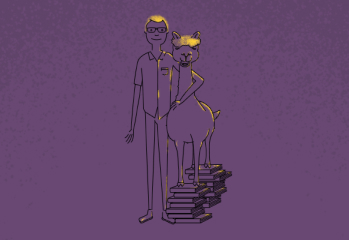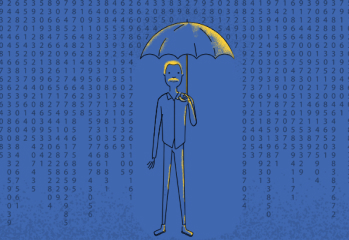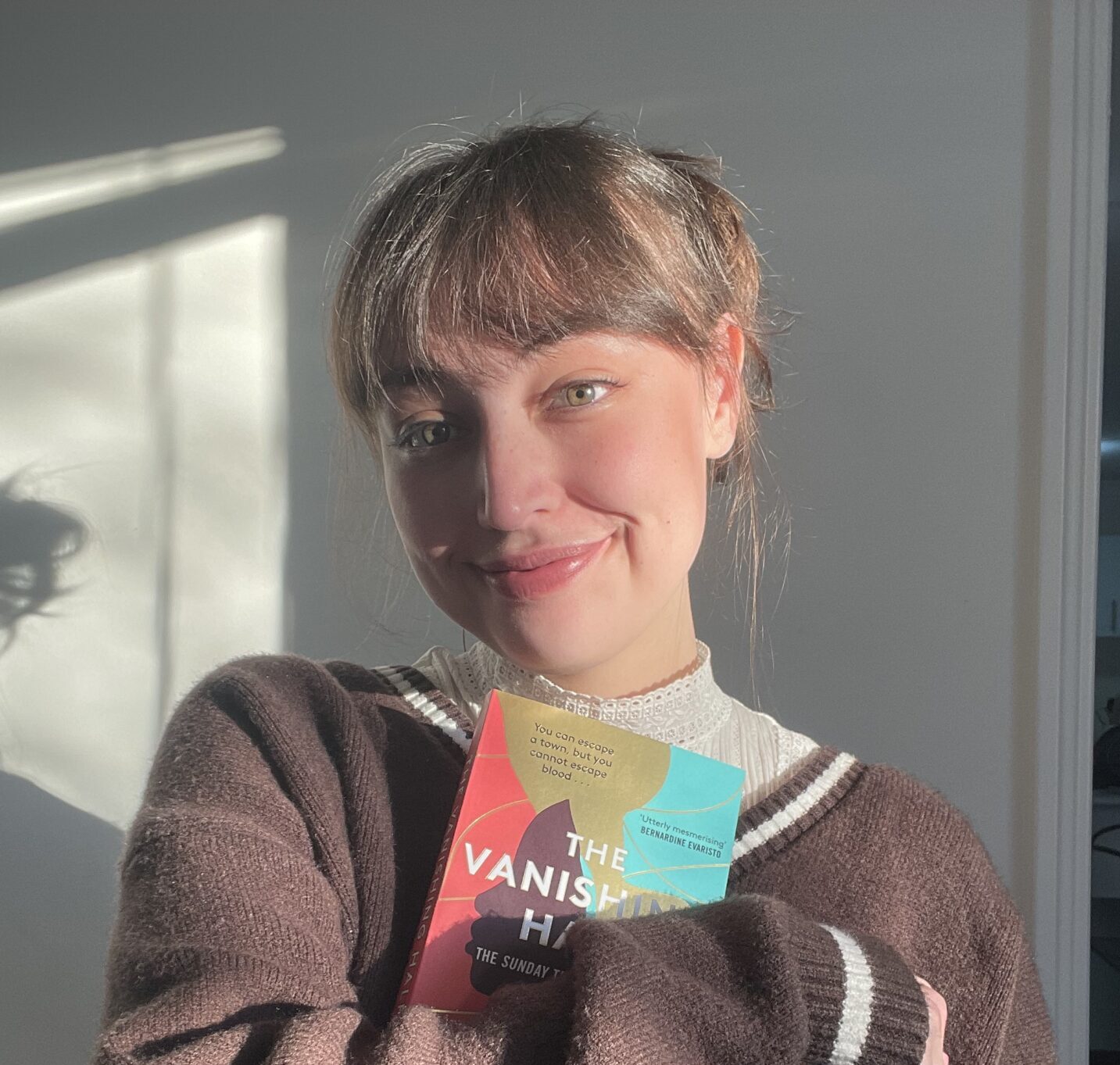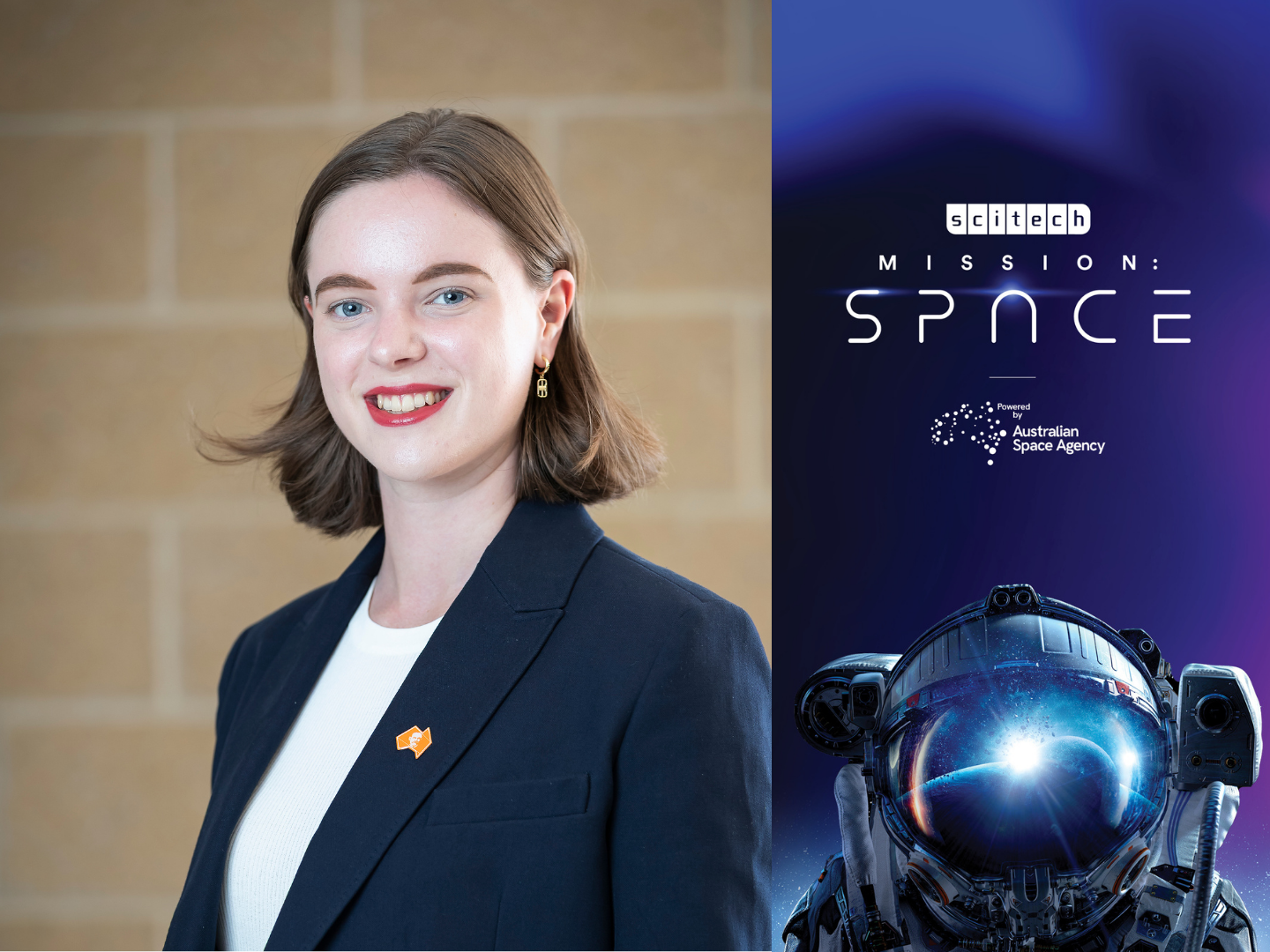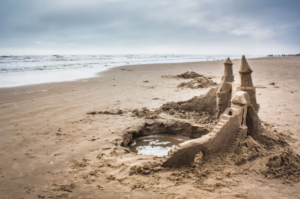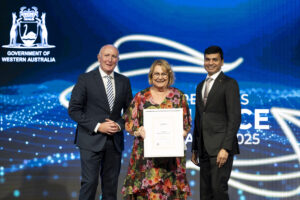Georgia Dallimore’s excitement about her dream job is like standing in a sunbeam. After one conversation, you’re suddenly considering chasing your own passions with more fervour … or building your own space robot.
“I don’t think a single day goes past where I don’t pinch myself and think I cannot believe I am walking to work right now and I am going to the Australian Space Discovery Centre,” says Georgia.
Georgia is an aerospace engineer and space communicator at the Australian Space Agency.
Listening to Georgia confidently speak about her career, it’s hard to believe she once felt uncertain that working in space was the right path for her.
Caption: Georgia outside the Australian Space Discovery Centre.
Credit: Australian Space Discovery Centre
A DREAM REKINDLED
“I loved space and science from pretty early in primary school,” says Georgia.
“But like a lot of people, I thought, oh, there’s just no way I can study space in Australia. I’ll have to move overseas.
“Because of that, I ruled it out pretty quickly.”
With the dexterity to use scissors hardly mastered, Georgia was already highly logical and dismissed her voyage to the academic cosmos as unfeasible.
“I really enjoyed physics, but it didn’t come naturally to me. I wasn’t the best at it. It was something I really had to work hard for.”
But Georgia’s passion was undeniable. Her teachers quietly encouraged her along the way.
In Year 11, her homeroom teacher handed her a magazine called Careers with STEM.
“On the front page it said, ‘A Woman’s Place is in Space’,” says Georgia.
“There was this interview with a female CEO of a local space company … I couldn’t believe it.
“This thing … that I never thought I could do was now happening in my hometown. And a woman was running things.
“From then on, it didn’t feel so out of reach.”
IT’S A SIGN
The day the Australian Space Agency announced its headquarters would be based in Adelaide, Georgia leapt out of bed, raced to school and told her teachers it was a sign.
It was.
“I started Googling what people in the space industry had studied,” says Georgia.
“There was this common thread – all of them did some kind of engineering.”
Georgia’s drive to pursue her dream turned her high school grades around, and she started studying a mechanical engineering degree.
She was a standout student. Georgia competed in the Australian Rover Challenge, designing and racing a lunar rover against teams from across the world.
Caption: Georgia working on the Australian Rover Challenge.
Credit: Crispin Savage/University of Adelaide
In a full circle moment, Georgia later returned to design the challenge for new students.
“That was a really, really big part of my uni experience,” says Georgia. “And now it’s something I get to help run.”
THE BEST FEELING IN THE WORLD
Georgia is both an engineer and space communicator, working at the Australian Space Discovery Centre to inspire other young people to get involved in the space sector.
“I get students coming in all the time saying I’m not good at science or maths but I love space,” says Georgia.
“And I tell them, you’ve got to go for it. It’s like riding a bike – you’ve got to practice, and then one day, the training wheels come off.”
Georgia is preparing to start her master’s degree in space systems engineering.
“Every course I’m studying has the word space in it,” she says.
“I’m excited to learn more about some cutting-edge and brand-new things that focus on problems we’re trying to solve in the space industry right now.”
Caption: Georgia and colleagues.
Credit: Australian Space Discovery Centre
While she’s a professional communicator now, Georgia used to find presenting challenging.
“In high school, I couldn’t make a presentation without my entire speech written out on cue cards,” says Georgia.
She built her confidence by debating and sees communication as a powerful tool for change.
“When I saw that female CEO in that magazine, that visibility shattered a lot of impressions I had,” says Georgia. “It showed me there were people like me in the industry.”
In another full circle moment, Georgia is now that woman for other girls.
“To be able to give back to the same community that helped me … to see girls coming through engineering or visiting the Discovery Centre and seeing women working there – that is the best feeling in the world.”
Georgia is involved in the Mission: SPACE program delivered by Scitech and powered by the Australian Space Agency. You can register for this nationwide virtual excursion here.
